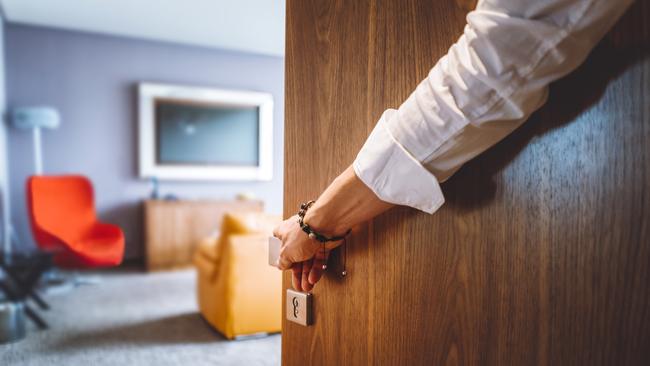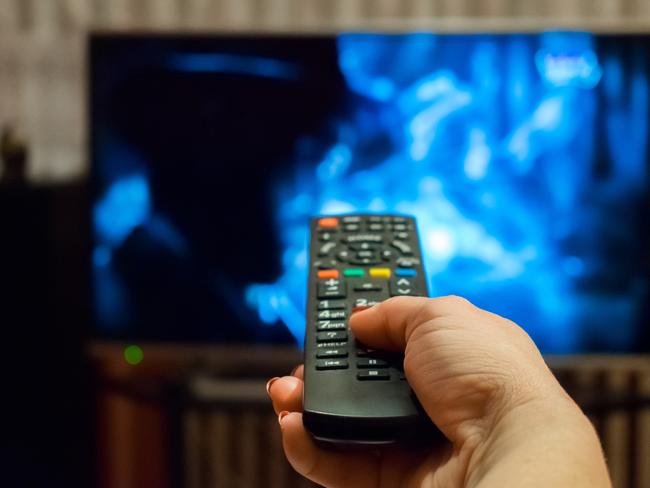These are the grossest spots in your hotel room
STAYING in a hotel room is supposed to be luxurious. But lurking within is a cesspool of germs. And these are the worst culprits.

IT CAN be hard to relax on holiday when you imagine that your hotel room is a Petri dish of previous guests’ germy discards, even if there aren’t the usual telltale signs of uncleanliness.
Here, germ experts give us all the disgusting details — and the best ways to protect yourself while hitting the road this summer.
SHOWER SURFACES
The hotel tub is teeming with existing bacteria, so it’s best to skip the bath and limit exposure by showering.
“Keep in mind there’s a [film] that forms over time in the tub and that holds organisms,” says Philip Tierno, a microbiologist and clinical professor of microbiology and pathology at the NYU School of Medicine.
But even showering isn’t without concern — the moist setting is a breeding ground for fungus (which can cause athlete’s foot), and mould (which can trigger allergies in people with sensitivities, prompting sneezing, nasal congestion and itchy, watery eyes).
“If you smell mildew, you’ve got mould exposure,” says Dr. Clifford Bassett, medical director of Allergy & Asthma Care of New York.
Tierno advises running the hot water for one minute and squirting some shampoo or shower gel onto the bath surface before stepping in. “You’re reducing the number of organisms that collect,” he says.

SHOWER HEAD
Ideally, these fixtures should be replaced every year. If they’re not, or if they’re not properly cleaned, legionella exposure is a potential concern.
This bacterium, which appears in potable water supplies, can spray out and — for older adults or those with weakened immune systems — lead to deadly Legionnaires’ disease.
Again, run the hot water for a minute or two before stepping in, says Tierno. “Whatever’s loose can drop out — and that’s ideal.”
TOILET
When it comes to handling the toilet, use common sense. If it’s visibly soiled, request a room change — or head to another hotel. Even if it isn’t, you can’t be too careful. Tierno advises travelling with alcohol wipes — heck, even buying some Lysol — to clean the seat and the flush handle for safety.
“The chances of you coming down with something are slim,” says Tierno, but exposure to fecal particles can bring about norovirus, the technical name for a stomach bug.
REMOTE CONTROL
The remote — handled by many hands — can house all sorts of gross stuff in its many crevices.
“There’s human hair, bodily excretions based on what [people] touch before they touch the remote ...  insect parts that may be part of the room’s dust ... cosmetics, even food,” adds Tierno.
“Of course, you perspire, and that serves as a nice medium that assists in the growth of organisms over time.”
Before channel-surfing, Bassett recommends placing the remote in a large Ziploc bag.

BED
When you arrive, take off the bedspread — a layer long suspected to house semen, urine — you name it.
“If [it’s] put away in the corner, you don’t have to worry about it,” says Tierno, who adds it’s useful to place a note on top telling housekeeping not to put it back on the bed. Beyond bodily fluids, allergens are the primary concern here, due to dust mites.
To lessen an allergic reaction, handle the fabrics gently. And keep medications, such as steroid nose sprays, inhalers or eye drops, on hand during hotel stays.
CARPET
Carpeting can also be a source of those pesky dust mites. If allergens are a major concern, Bassett suggests seeking out a hypo-allergenic room with in-room medical-grade air purification, as well as microfibre pillow cases and mattress covers to nix dust and dander.
Under humid conditions, fungal spores can also grow, so Tierno recommends walking around in slippers.
SOFT FURNITURE
It’s best to avoid that comfy-looking upholstered recliner. “People sit there nude,” says Tierno, potentially spreading staphylococcus bacteria via their underarms and rectal cavities, which can potentially lead to staph infections.

This story originally appeared on the NY Post and was republished with permission.



